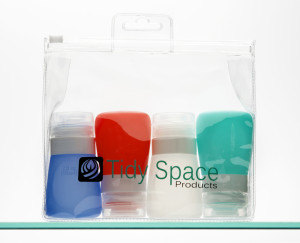Understanding Natural and Synthetic Fabrics

Clothing is no longer just one of our basic needs. It has become our way of self-expression and in most cases, an unintentional way of showing our individualities. Purchasing clothes, we may often check the styles, but how many of us are mindful of the clothing materials?
Have you wondered why some clothes are just affordable while others are a little bit pricey? And why you love bringing your wrinkle-free garments? Or how you love wearing particular clothes for summer or during the colder months? These are some effects of clothing materials or fabrics.
Fabrics are divided into two – natural and synthetic. You may have read them as common cotton material to the not so familiar kinds like polyester spandex, viscose, and polyblend. Today is the time to be conscious on the type of fabric you are wearing getting to know more about them.
Natural Fabrics
Natural fabrics are sourced from plants and animals and with this, they are the first fabrics used by humans for centuries before synthetic types were introduced. Natural fabrics commonly used for clothing are cotton, linen, wool, and silk.
Cotton is the widely used natural fabric, derived from the cotton plant while linen comes from flax plants. Plant-based fabrics comes from meticulously getting fibers from these plants using different processes, pooling them into yarns of threads before weaving them into fabrics.
Animals also provide natural fabrics like wool and silk. Wool comes from sheep and its more luxurious kind – cashmere – comes from a certain kind of goat. Silk of course, comes from protein fibers of silkworm cocoons. These are collected by shaving the body covering of the animals – in the case of wool and cashmere – before spooling them and then woven into cloths.
Advantages of Using Natural Fabrics
Natural fabrics carry with them plenty of gains above their synthetic competitors. They are obviously comforting to wear, soft, and strong. Their natural structures make them breathable and great when temperature starts to climb.
If you want a piece to last longer, it is best to choose natural fabric. Invest in wool and silk and they will surely be worn for years. They are definitely built to last, strong and durable. Their colors are still vibrant after many years of wearing, washing, and ironing. This explains why most of our parents and grandparents’ clothing becomes vintage pieces since in those days, the majority of clothes were made from natural fabrics
 Linen and cotton are known for their “all-climate” qualities, making them staples in every wardrobe. The same goes with wool, they are absorbent – absorbing sweat during warm climate and insulate the body when the weather turns cold.
Linen and cotton are known for their “all-climate” qualities, making them staples in every wardrobe. The same goes with wool, they are absorbent – absorbing sweat during warm climate and insulate the body when the weather turns cold.
Natural fabrics also carry with them unique features. For example, they are hypoallergenic and/or anti-microbial. Thus, if you have sensitive skin or for those with small children and infants, buy clothing made from natural fabrics.
With its position as nature-derived fabrics, these choices are preferred for consumers who are mindful of their environment and health effects. The main disadvantages of synthetic fabrics are its harmful toxins to both the body and to the environment. This will be discussed deeper later.
Drawbacks of Natural Fabric
As promising as natural fabrics can be, there are some reasons why not everybody uses natural fabric in all their clothing and why synthetic ones seem to stay longer. The main setback of clothing made from natural fabrics is their cost. They definitely looked luxurious – think of cashmere and silk – yet they come with high price tags. Not everyone can afford to purchase these fabrics. Clothing made from 100% cotton is more expensive compared to a shirt made from polyester.
There are also issues of these fabrics not just more expensive than synthetic but they are simply overpriced. Critics want to draw our attention to luxury items and clothing from designer brands that cost a fortune.
As more cotton are cultivated with high pesticides and treated with chemicals, conscious consumers now start to think about buying organic cotton. Obviously, the market share is still small due to the fact that clothing made from organic cotton are expensive. You may own a few pieces, but it seems impossible to have your whole wardrobe made from these pesticide-free natural fabrics.
Natural fabrics are beautiful but they are not easy to take care. Some are sensitive and should only be hand-washed – this can be difficult for busy individuals. They also wrinkle, thus they are not good choices if you travel a lot.
When it comes to pressing, they are also very delicate and when you accidentally burn your clothing, it is such a waste of money as we trace back the higher cost of clothing made from natural fabrics. Clothing made from natural fabrics also tends to shrink, a nuisance to many patrons.
Synthetic Fabrics
Synthetic fabrics are made from processing materials from nature, adding some chemicals and then undergo various treatments. The main objective of synthetic fabrics is to mimic the properties of natural fabrics with improved features from cost to delicateness.
In recent years, many clothing specifically in the retail market at affordable prices uses synthetic fabrics. To name a few of these fabrics, they are nylon, rayon, and polyester. Some of these synthetic fabrics are combined and blended to create other fabrics that can imitate other clothing materials like leather.

Polyester, nylon, and acrylic are made from oil and coal. Polyester is one of the most widely used synthetic fabrics as an alternative to cotton and linen. It is also made from petroleum and polymers. Rayon, which is a silk substitute, is made from recycled wood pulp.
Synthetic fabrics are then treated with various chemicals in order to replicate the properties of natural fibers. After treatment, they are heavily dyed adding more chemicals to its production.
Benefits of Using Synthetic Fabrics
Its affordability is the top advantage of synthetic fabrics. With the invention of these fabrics, fashion is no longer limited to those who can afford it. Likewise, the rise of various retail stores offering stylish clothing for a small cost is not just brought by mass production but the wide usage of synthetic fabrics is also a big factor. Check out your favorite affordable retail store and see if their products are made from synthetic fabrics.
Natural fabrics for example cashmere, is one of the most expensive fabrics, but with synthetic fabrics like Lyocell or Tencel (both made from wood pulp), you can look chic without breaking the bank.
A vegan lifestyle also extends to clothing and synthetic fabrics are top choices since vegan fashion prohibits the use of animal-sourced natural fabrics like cashmere, wool, and silk.
Synthetic fabrics demand less care and are suitable for today’s modern and fast-paced lifestyles. Many fabrics are produced with added features like less wrinkling. Unlike natural fabrics, they retain their shape. Thus, many of them only demand wash and fold – suitable if you travel a lot or just want to spend less time taking care of your clothes.
Drawbacks of Synthetic Fabrics
The top criticism of synthetic fabrics is their effects to health and to the environment. From their raw materials to various treatments, chemicals are used that can contaminate the human body. Environmental hazards particularly the wastes of producing these synthetic fabrics are disposed of in water systems and the atmosphere.
Let us go first to the health hazards posed by synthetic fabrics to the human body. Many synthetic fabrics contain heavy metals that are toxic to the body. The first reaction to these toxins is itchiness. Therefore, those with sensitive skin and small children should refrain from using synthetic fabrics. Remember that any contact to the skin will eventually go to the body.
The U.S. Environment Protection Agency also cites many carcinogens and other cancer-causing compounds like perflourinated chemicals (PFCs) used in wrinkle-free synthetic fabrics, which are widely used in many schools. To produce these fabrics, there are many treatments involved using harmful chemicals like sulphuric acid, ammonia, and caustic soda.
Petrochemicals used in dyeing synthetic fabrics pollute waterways which eventually kill flora and fauna in many rivers. Fabric factories also emit nitrous oxides and other greenhouse gases.
From health and environmental hazards, synthetic fabrics also have some inferiority compared to natural fabrics. Synthetic can have a rough feel unlike natural fabrics that are smooth and provide the wearer a great feeling. They are also non-absorbent, thus, they are not the best clothing material to have during the hot season.
Since they are cheaper compared to natural fabrics, they are not hailed for their durability. Their colors also fade faster and after many washes, you will notice the wear and tear of your clothes unlike those made from natural fabrics that will last for many years.

The Verdict
Between natural and synthetic fabrics, it doesn’t need much defense that naturally sourced fabrics are far more superior. They are durable, soft, and effortlessly provide a high-quality and pleasing experience for the wearer. Even though natural fabrics use pesticides (the case of plant-based fabrics like cotton and linen), they are less threatening to the environment compared to synthetic fabrics. There are more options for highly conscious consumers like organic cotton.
However, if you are judging economically, you will find synthetic fabrics better as they provide great value for your money. As fashion styles come and go, many consumers prefer to invest a little on clothes made from synthetic fabrics. For today’s lifestyle, synthetic fabrics also provide convenience. Less ironing, saving not just time but utility bills.
To weigh everything, pick natural fabrics for your clothing that are staple to your wardrobe. Synthetic fabrics may seem cheap, but in the long run, synthetic fabrics save over the cost of natural fabrics. Purchase important clothing from your coat to everyday shirts with natural fabrics. On the other hand, rarely worn clothing or those for traveling can be made from synthetic fabrics if you wish to spend less.

Click Image for Details
The final decision relies on each consumer but often, many are not aware of the differences and the effects of synthetic fabrics to one’s health and to the environment. To simply put it and setting aside health and environment hazards, natural fabrics are great for those with sensitive skin and for those who want their clothing to last longer. On the other hand, synthetic fabrics are great for those who want something thrifty and clothing that demands less care.
